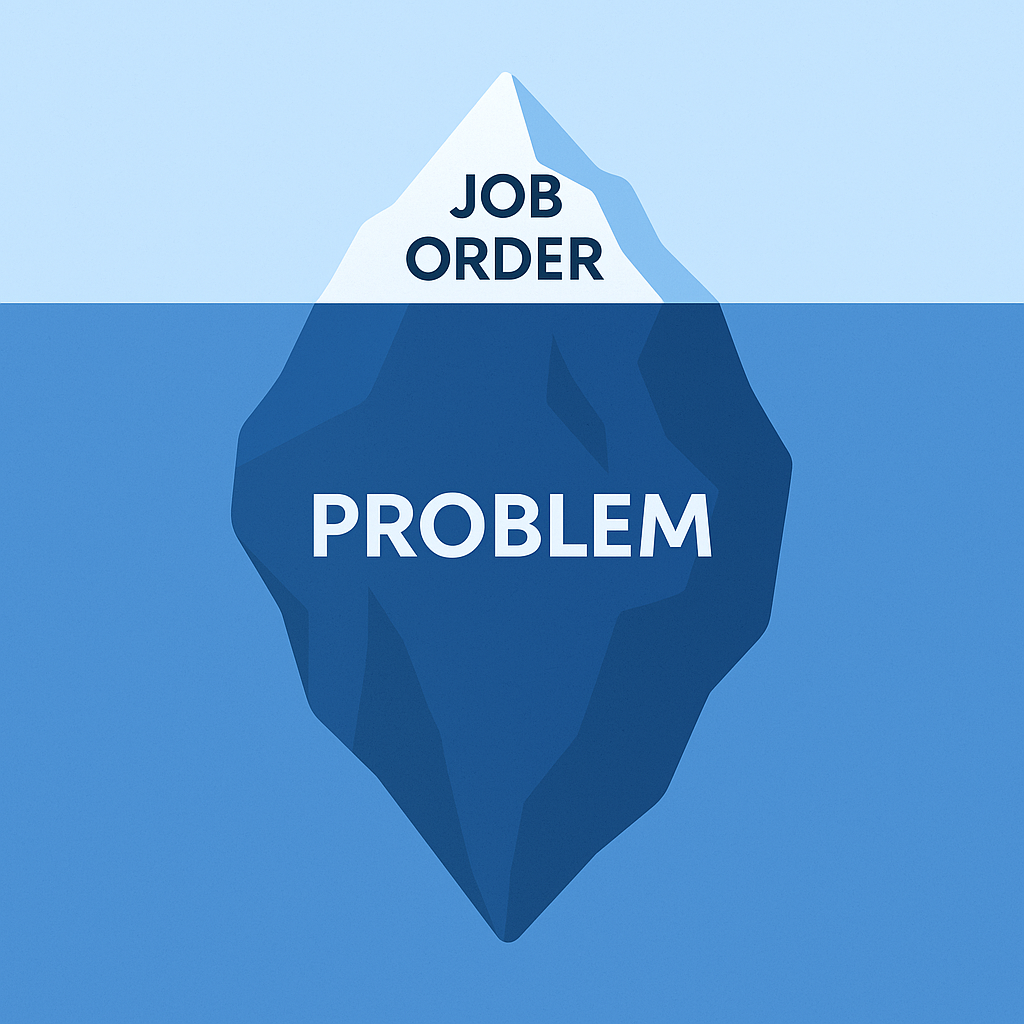Selling With Your Consultant
In my previous post, How to Prevent Unexpected Contract Terminations, I shared how systemizing consultant and client check-ins at key milestones...
4 min read
![]() Dan Fisher
:
Apr 18, 2025 8:37:04 AM
Dan Fisher
:
Apr 18, 2025 8:37:04 AM

What I’m about to share with you isn’t pretty. It’s going to make you uncomfortable.
And it should.
Have you ever looked at your team and thought:
You're not alone.
Many leaders see a gap in performance and assume it is a motivational issue or a training issue.
But here’s the uncomfortable truth:
It’s not a people problem. It’s a leadership problem.
You’ve invested in hiring. Onboarding. Training. Tools and technology.
And yet—execution still falls short.
There’s a reason for that. And in this post, I'm going to confront it.
I’m going to expose the silent killers that sabotage team performance — the three common leadership behaviors that kill performance and culture.
Over the past two decades, I’ve worked with hundreds of organizations, and in that time I’ve witnessed a consistent pattern of behaviors that quietly kill performance, morale, and culture.
Double Standards
Here are some classic quotes I’ve heard from leaders over the years:
These are excuses.
When I hear statements like these I know the company has no standards.
And in my experience, companies that lack standards can’t scale revenue growth.
When you hold people to different standards, it quietly erodes the foundation of performance, culture, and trust you’re trying to build.
Here’s how it plays out:
Creates a Two-Tier Culture
The message? Rules are optional… if you’re good enough
This breeds resentment, and drives employee turnover.
Kills Team Morale
Your high-effort reps & recruiters stop caring. They tune out.
Why put in the work when others cut corners and get away with it?
Eventually, your hardest workers:

When standards are fluid, nobody knows what’s actually expected:
That confusion leads to hesitation. Hesitation leads to inconsistency. And inconsistency kills performance.
I’ve delivered hundreds of consulting engagements. 95% of the time, each engagement begins with a discovery process to facilitate introductions and help me familiarize myself with the organization. I interview the leadership team, middle management, and a handful of individual contributors.
I ask simple questions like:
Most individual contributors struggle to answer these questions.
Middle managers and leadership usually give conflicting responses.
How can this be?
Two reasons.
First, most leaders don’t just fail to set expectations — they outsource them.
They rely on the annual meeting, an internal memo, a company deck, or a Teams or Slack message to communicate what's expected.
But expectations aren't real until they’re repeated, reinforced, and reviewed consistently.
When a leader communicates expectations only once a year in a slide deck or during an annual meeting, it creates the illusion of clarity, but in reality, it introduces ambiguity and drift.
Your culture is shaped by what gets enforced, not what gets announced.
Second, leaders don’t communicate expectations because if they don’t set expectations, there’s nothing to hold people accountable to.
This allows them to avoid discomfort, the difficult conversations when performance dips.
But when you fail to consistently communicate and reinforce expectations:
And the worst part?
Nobody notices right away.
A few months go by. Suddenly you realize:
Being Liked vs. Being Respected
Most leaders build strong rapport with their team — but then avoid holding people accountable for fear of disrupting the relationship.
They confuse camaraderie with credibility, and in doing so, sidestep the uncomfortable conversations about missed commitments and underperformance — the very conversations that drive results.
The leader is more concerned with being liked than delivering results.
Trying to "protect morale" by avoiding accountability creates silent resentment. Especially from your best people — because they’re left to carry the weight while others coast.
Here is the kicker.
When performance becomes too costly, the leader will fire the direct report. But they do it without ever having the proper conversations in which they provide constructive feedback along the way. And that is a disservice to the employee and the business.
Accountability is not micromanagement. It’s a feedback loop.
It sounds like this:
It looks like this:
Managers who fear being disliked often create a fake sense of harmony. Everyone smiles in meetings… and silently underperforms.
Conclusion
The silent killers of performance—unclear expectations, fear of accountability, and double standards—don’t show up all at once. They leak into your culture slowly. Quietly. Until suddenly, you’re wondering why results have stalled, why morale is low, and why your best people are leaving.
This isn’t a motivational issue. It’s a leadership issue.
If you want a high-performing team, you must lead with clarity, consistency, and courage. That means setting the bar, reinforcing it daily, and holding everyone—yes, everyone—to the same standard.
Culture isn’t what you say. It’s what you tolerate.
So ask yourself:
Where is culture leaking in your organization?
And what are you going to do about it?

In my previous post, How to Prevent Unexpected Contract Terminations, I shared how systemizing consultant and client check-ins at key milestones...

About a year ago, I was serving as the fractional revenue leader, managing sales and recruiting for a client.

If you’ve worked in staffing long enough, you’ve been trained to chase job orders.